Do you have a question about the Panasonic Diga DMR-EZ48VEB and is the answer not in the manual?
| Brand | Panasonic |
|---|---|
| Model | Diga DMR-EZ48VEB |
| Category | DVD Recorder |
| Language | English |
Learn about receiving Freeview via the integrated digital tuner and its features.
Discover how to find and select programmes for watching and timer recording.
Explore linked operations with the TV and external equipment.
Information regarding the UK's digital TV switchover process and its impact.
Contact details and resources for customer support and purchasing accessories.
Important safety instructions regarding AC mains lead connection.
Step-by-step guide on how to safely replace the fuse in the AC mains plug.
Identification and function of buttons on the remote control.
Identification of buttons, indicators, and terminals on the main unit.
Explanation of the indicators and symbols shown on the unit's display.
Identification and description of the terminals located on the rear panel of the unit.
Instructions for using the RF coaxial cable for connecting the unit to an aerial.
Step-by-step guide for connecting the unit to a television using RF and Scart cables.
Detailed pinout and function of the 21-pin Scart terminal for AV connections.
Utilizing Q Link functions and enjoying high-quality viewing with a Scart cable.
Guide for connecting a satellite receiver to the unit and TV for viewing and recording.
Instructions for connecting the unit to a TV via HDMI for high-quality digital audio and video.
Explanation of VIERA Link features for linked operations with Panasonic TVs.
Configure the power saving mode to reduce standby power consumption.
Manual and automatic setting procedures for the unit's clock.
Table detailing compatible discs for recording and playback with their specifications.
List of discs that can only be played back, not recorded.
List of incompatible discs that the unit cannot play.
Table showing disc compatibility based on TV's PAL or NTSC system.
Details on playable MP3 file formats, folder limits, and bit rates.
Details on playable JPEG file formats, pixel limits, and folder limits.
Instructions for watching programmes from a satellite receiver connected to the unit.
Steps for playing various types of discs like DVD-Video, DVD-RAM, and CDs.
Instructions for playing video cassettes in the VHS drive.
Explanation of the Freeview built-in function and its "Guide Link" feature for timer recordings.
Procedure for copying video content from VHS tapes to DVDs.
Procedure for copying titles from DVDs to VHS tapes.
Accessing the Delete Navigator to manage and delete recorded titles.
Method for deleting titles while a disc is playing.
Table detailing different DVD recording modes and their respective recording times.
Overview of VHS recording modes and their durations.
Instructions for formatting discs when prompted by the confirmation screen.
Information regarding finalising discs after recording or copying.
Function to immediately start recording the programme currently being viewed.
How the unit automatically selects the best recording mode for remaining disc space.
Allows playback of one drive while recording on the other drive.
Step-by-step guide for manually recording programmes from a satellite receiver.
Setting up timer recordings using external equipment via the EXT LINK function.
Procedures for recording video and audio from external devices like VCRs.
Guide for setting manual timer recordings for programmes.
How to stop an active timer recording before it completes.
Method to cancel pre-set daily or weekly timer programmes.
How to view, modify, or remove programmed timer recordings.
Using a Q Link compatible TV to set timer recordings.
Introduction to the TV Guide feature for browsing digital TV programmes.
Navigating the TV Guide, changing channels, and viewing programme information.
Filtering the TV Guide list by programme type or category for easier selection.
General navigation of menu screens that appear on the TV.
Using DIRECT NAVIGATOR to easily select and play recorded titles.
Accessing specific titles or scenes via direct entry of numbered buttons.
Playing video at reduced speeds.
Viewing video frame by frame.
Skipping in 1-minute or 10-minute increments.
Skipping approximately 1 minute forward with each press.
Creating chapters for favourite scenes to easily navigate playback.
Procedures for playing still pictures recorded from a computer onto discs.
Rotating still pictures for proper viewing orientation.
Magnifying still pictures for closer examination.
Instructions for playing MP3 files recorded onto discs.
Operations for fast-forwarding and rewinding video tapes.
Playing video cassettes at reduced speeds.
Quickly reviewing played portions or cueing to later parts of the tape.
Using index signals to quickly find the beginning of programmes on a tape.
Playing back video cassettes recorded in S-VHS format.
Enabling automatic playback of the entire tape.
Manual adjustments for picture quality, including tracking and vertical locking.
Explanation of indicators and status messages displayed on the screen.
Displaying programme details, broadcast times, and channel quality information.
Accessing and viewing digital text services provided by broadcasters.
Enabling or disabling subtitles for digital broadcasts.
Checking the quality and strength of digital broadcast signals.
Understanding messages and displays indicating unit operations and status.
Notification of new DVB channels and initiation of auto-setup.
Explains VIERA Link function for linked operations with Panasonic TVs via HDMI.
Explains Q Link function for linked operations with Panasonic TVs via Scart cable.
Operating the unit using a VIERA TV's remote control via HDMI connection.
Navigating to the Title View screen for managing recorded titles.
Performing actions like delete, set protection, partial delete, and view properties for titles.
Changing the thumbnail image used to represent a title.
Splitting a single title into two separate titles.
Navigating to the Chapter View screen for managing chapters.
Creating, deleting, and combining chapters for titles.
Grouping favourite scenes (chapters) into playlists for easier playback.
Navigating to the Playlist View screen to manage playlists.
Modifying existing playlists and chapters.
Removing unwanted playlists from the disc.
Performing edits on playlists, such as adding, moving, or creating chapters.
Detailed operations for managing chapters within playlists.
Step-by-step guide for copying video from VHS tapes to DVD discs.
Procedure for copying titles or playlists from DVDs to VHS tapes.
Options for editing the copying list, including deleting, adding, or moving items.
How to cancel all recorded copying settings and lists.
Copying content from finalised discs to VHS, including setting copy time.
Settings related to disc playback, including ratings, soundtrack, subtitle, and menus.
Options for controlling disc playback, such as repeat play and picture settings.
Adjustments for picture quality during playback.
Adjusting dynamic range for better listening at low volumes.
Selecting audio channels for bilingual broadcast recordings.
Configuring audio output settings for connected digital equipment.
Setting Dolby Digital output to Bitstream or PCM.
Setting DTS output to Bitstream or PCM.
Setting MPEG audio output to Bitstream or PCM.
Choosing audio type for XP recording mode.
Selecting audio type when recording from DV input.
How to access menus for disc management operations.
Procedure to delete all titles on a single-sided DVD-RAM disc at once.
Preventing accidental erasure of disc contents by setting protection.
Assigning names to discs for easier identification.
Process of preparing discs like DVD-RAM and DVD-RW for recording.
Choosing whether the top menu appears automatically after finalising a disc.
Process to make recorded discs playable on other DVD players.
Creating a top menu for +RW discs before playing on other equipment.
Instructions for making DL discs recordable on the second layer.
How to navigate and access the main Setup Menu for configuring unit settings.
Settings related to tuning digital channels, including auto-setup and manual tuning.
Creating and managing channel profiles for easier viewing and recording.
Restarting the auto channel setting process for terrestrial digital channels.
Manually tuning channels when DVB Auto-Setup is incomplete.
Searching for and adding newly available terrestrial digital channels.
Checking the quality and strength of digital broadcast signals.
Configuring playback options like ratings, soundtrack, subtitles, and menus.
Adjusting recording settings, specifically recording time in EP mode.
Adjusting picture sharpness for recording, particularly for NTSC signals.
Selecting the type of picture shown when playback is paused.
Configuring seamless playback for playlist chapter segments.
Adjusting dynamic range for better listening at low volumes.
Selecting audio channels for bilingual broadcast recordings.
Configuring audio output settings for connected digital equipment.
Setting Dolby Digital output to Bitstream or PCM.
Setting DTS output to Bitstream or PCM.
Setting MPEG audio output to Bitstream or PCM.
Choosing audio type for XP recording mode.
Selecting audio type when recording from DV input.
Configuring connection settings, including TV Aspect, Progressive, and AV outputs.
Setting the aspect ratio for 4:3 televisions to optimize picture display.
Selecting the preferred subtitle language for digital broadcasts.
Adjusting the display duration for on-screen messages.
Adjusting the brightness of the unit's display.
Managing notifications for new DVB services.
Selecting the video output format (e.g., 1080p) for HDMI connections.
Adjusting how 4:3 video is displayed on a 16:9 widescreen TV.
Configuring the AV1 output terminal for composite or RGB signals.
Setting AV2 input for external equipment and configuring Ext Link options.
Setting up the external link function for timer recordings.
Enabling or disabling the VIERA Link function for integrated control.
Setting the tape length for accurate remaining time display.
Enabling S-VHS Quasi Playback for playing S-VHS recorded tapes.
Configuring power saving settings for reduced standby consumption.
Instructions for updating the unit's software and TV Guide data.
Enabling automatic TV Guide data download when the unit is off.
Enabling automatic software updates when the unit is off.
Setting the time for automatic TV Guide and software updates.
Manually initiating a search for new software versions.
Options for resetting unit settings to shipping condition or default settings.
Resetting all unit settings to their factory defaults.
Resetting most unit settings to factory defaults, excluding specific items.
Locking the unit's buttons to prevent unauthorized operation.
Programming the remote to control basic TV functions like power and input.
Utilizing Q Link functions with a 21-pin Scart cable for enhanced TV interaction.
Instructions for proper use of the RF coaxial cable to prevent interference.
Explanation of common and priority outputs for DVD and VHS signals.
Guide for connecting a VCR to the unit and television for recording and playback.
Connecting the unit to a TV using AV cables for audio and video signals.
Connecting the unit to a TV using an S-Video cable for improved picture quality.
Connecting the unit to a TV using component video cables for progressive output.
Connecting an amplifier or system component with an audio cable for improved sound quality.
Connecting to an amplifier with an optical digital audio cable for multi-channel surround sound.
Connecting the unit to TVs or receivers via HDMI for high-quality digital signals.
Step-by-step instructions for inserting discs into the unit.
Guidelines for handling, cleaning, and storing discs to prevent damage.
Instructions for inserting video cassettes into the VHS drive.
Recommendations for maintaining video cassettes and caring for the unit's video heads.
Advice on preventing condensation and its effects on unit operation.
Procedures for cleaning the unit, DVD lens, and video heads.
Common questions regarding initial setup and video quality.
Questions related to disc compatibility, playback, and recording constraints.
Questions about recording from commercial media, digital audio signals, and disc compatibility.
Questions about TV Guide system functionality, satellite receivers, and unplugging the unit.
Explanations of error messages and status indicators displayed on the unit.
Further explanations of error messages and status indicators on the unit's display.
Troubleshooting common issues and messages displayed on the television screen.
Synchronizing remote control codes when multiple Panasonic devices are present.
Procedures to reset unit settings to factory defaults or restore from freezes.
Troubleshooting power-related issues, including no power and standby mode.
Addressing display issues like dimness, flashing times, and incorrect time settings.
Troubleshooting common operational problems with the unit and remote control.
Troubleshooting digital terrestrial broadcast reception issues.
Further troubleshooting for DVB-T reception, station sorting, and digital text.
Troubleshooting issues related to VIERA Link and control panel functionality.
Troubleshooting picture-related playback problems such as distortion or no image.
Troubleshooting sound issues like no sound, low volume, or distorted audio.
Troubleshooting playback operation issues like failed start, pauses, or incorrect aspect ratio.
Troubleshooting VHS picture issues like missing on-screen indicators or grey backgrounds.
Troubleshooting VHS sound issues like distorted audio or noise.
Troubleshooting issues related to recording, timer recording, copying, and external inputs.
Continued troubleshooting for recording, timer, copying, and external input issues.
Troubleshooting issues specific to VHS recording, such as flashing indicators or cannot record.
Troubleshooting issues when formatting discs fails.
Issues related to creating chapters and writing information to the disc.
Problems with marking start/end points for partial deletion due to power interruptions or close proximity.
Issues related to deleting chapters from a title.
Explains why recording time may not increase after deleting titles on certain disc types.
Issues encountered when trying to create a playlist.
Definition of Bitstream as compressed digital audio signal.
Explanation of CPRM technology for protecting recorded broadcasts.
Function of a decoder in restoring coded audio signals.
Explanation of Deep Colour technology for enhanced colour gradation via HDMI.
Description of Dolby Digital coding for multi-channel audio.
Process of remixing multi-channel audio to two channels.
Refers to the disc (DVD) and video cassette (VHS) drives.
Explanation of the DTS surround sound system.
Definition of dynamic range and dynamic range compression.
Distinction between film and video recording methods for progressive output.
Process to make recorded discs playable on other DVD players.
Process of preparing discs like DVD-RAM and DVD-RW for recording.
Explanation of frames and fields in video images.
Description of HDMI for transmitting uncompressed digital video and audio.
System for compressing and decoding color still pictures.
Definition of uncompressed digital audio signals.
Standard for compressing and expanding colour video.
Audio compression method with minimal loss of quality.
Methods for displaying widescreen video on standard TVs.
Feature for selecting scenes and menus on Video CDs.
Explanation of interlaced and progressive scanning methods for video signals.
Methods for preventing accidental erasure of disc contents.
Explanation of RGB signals and their use in video production.
Definition of sampling frequency in digital audio encoding.
Guide for checking aerial direction and signal quality.
Miniature representation of a picture for matrix display.
Explanation of interlaced high-definition video format.
Explanation of progressive high-definition video format.
Explanation of progressive high-definition video format.
Guidelines for unit placement to ensure proper ventilation and avoid damage.
Precautions regarding voltage sources and DC power usage.
Safety instructions for handling and maintaining the AC mains lead.
Warnings against allowing liquids or metal objects inside the unit.
Instructions on when to seek professional service for the unit.
Warning about laser radiation exposure and the need for qualified servicing.
General warnings about product safety, including fire, shock, and damage prevention.
Warning regarding battery replacement and disposal.
Guidance on the collection and disposal of electronic waste and batteries.
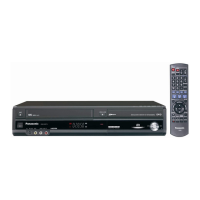
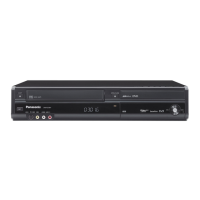
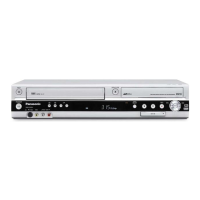
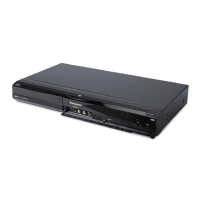
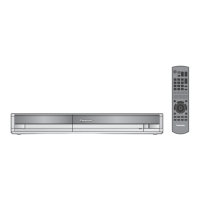
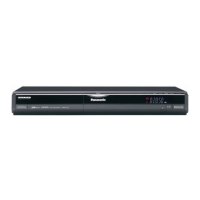
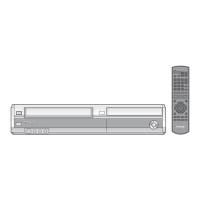

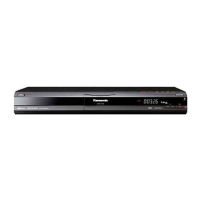
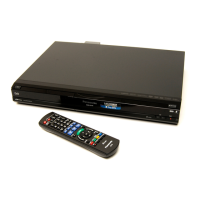
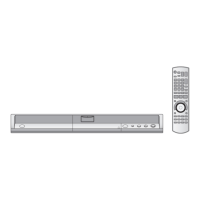
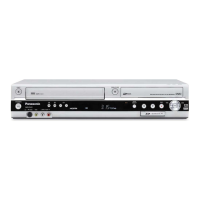
